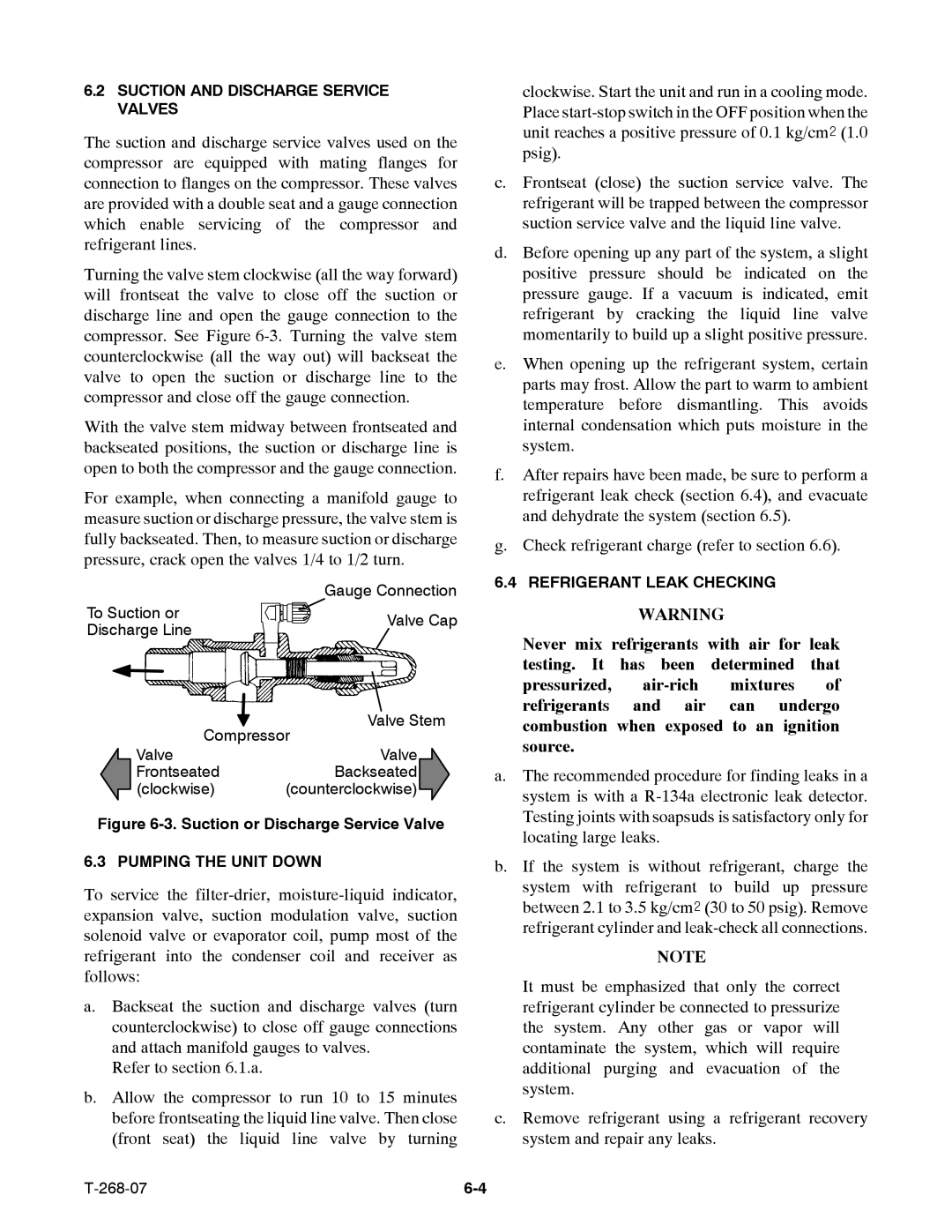
6.2SUCTION AND DISCHARGE SERVICE VALVES
The suction and discharge service valves used on the compressor are equipped with mating flanges for connection to flanges on the compressor. These valves are provided with a double seat and a gauge connection which enable servicing of the compressor and refrigerant lines.
Turning the valve stem clockwise (all the way forward) will frontseat the valve to close off the suction or discharge line and open the gauge connection to the compressor. See Figure
With the valve stem midway between frontseated and backseated positions, the suction or discharge line is open to both the compressor and the gauge connection.
For example, when connecting a manifold gauge to measure suction or discharge pressure, the valve stem is fully backseated. Then, to measure suction or discharge pressure, crack open the valves 1/4 to 1/2 turn.
| Gauge Connection | |
To Suction or | Valve Cap | |
Discharge Line | ||
|
| Valve Stem | ||
Compressor | |||
Valve | Valve |
|
|
Frontseated | Backseated |
|
|
(clockwise) | (counterclockwise) |
|
|
|
| ||
Figure 6-3. Suction or Discharge Service Valve
6.3 PUMPING THE UNIT DOWN
To service the
a.Backseat the suction and discharge valves (turn counterclockwise) to close off gauge connections and attach manifold gauges to valves.
Refer to section 6.1.a.
b.Allow the compressor to run 10 to 15 minutes before frontseating the liquid line valve. Then close (front seat) the liquid line valve by turning
clockwise. Start the unit and run in a cooling mode. Place
c.Frontseat (close) the suction service valve. The refrigerant will be trapped between the compressor suction service valve and the liquid line valve.
d.Before opening up any part of the system, a slight positive pressure should be indicated on the pressure gauge. If a vacuum is indicated, emit refrigerant by cracking the liquid line valve momentarily to build up a slight positive pressure.
e.When opening up the refrigerant system, certain parts may frost. Allow the part to warm to ambient temperature before dismantling. This avoids internal condensation which puts moisture in the system.
f.After repairs have been made, be sure to perform a refrigerant leak check (section 6.4), and evacuate and dehydrate the system (section 6.5).
g.Check refrigerant charge (refer to section 6.6).
6.4 REFRIGERANT LEAK CHECKING
WARNING
Never mix refrigerants with air for leak testing. It has been determined that pressurized,
a.The recommended procedure for finding leaks in a system is with a
b.If the system is without refrigerant, charge the system with refrigerant to build up pressure between 2.1 to 3.5 kg/cm@ (30 to 50 psig). Remove refrigerant cylinder and
NOTE
It must be emphasized that only the correct refrigerant cylinder be connected to pressurize the system. Any other gas or vapor will contaminate the system, which will require additional purging and evacuation of the system.
c.Remove refrigerant using a refrigerant recovery system and repair any leaks.
|
